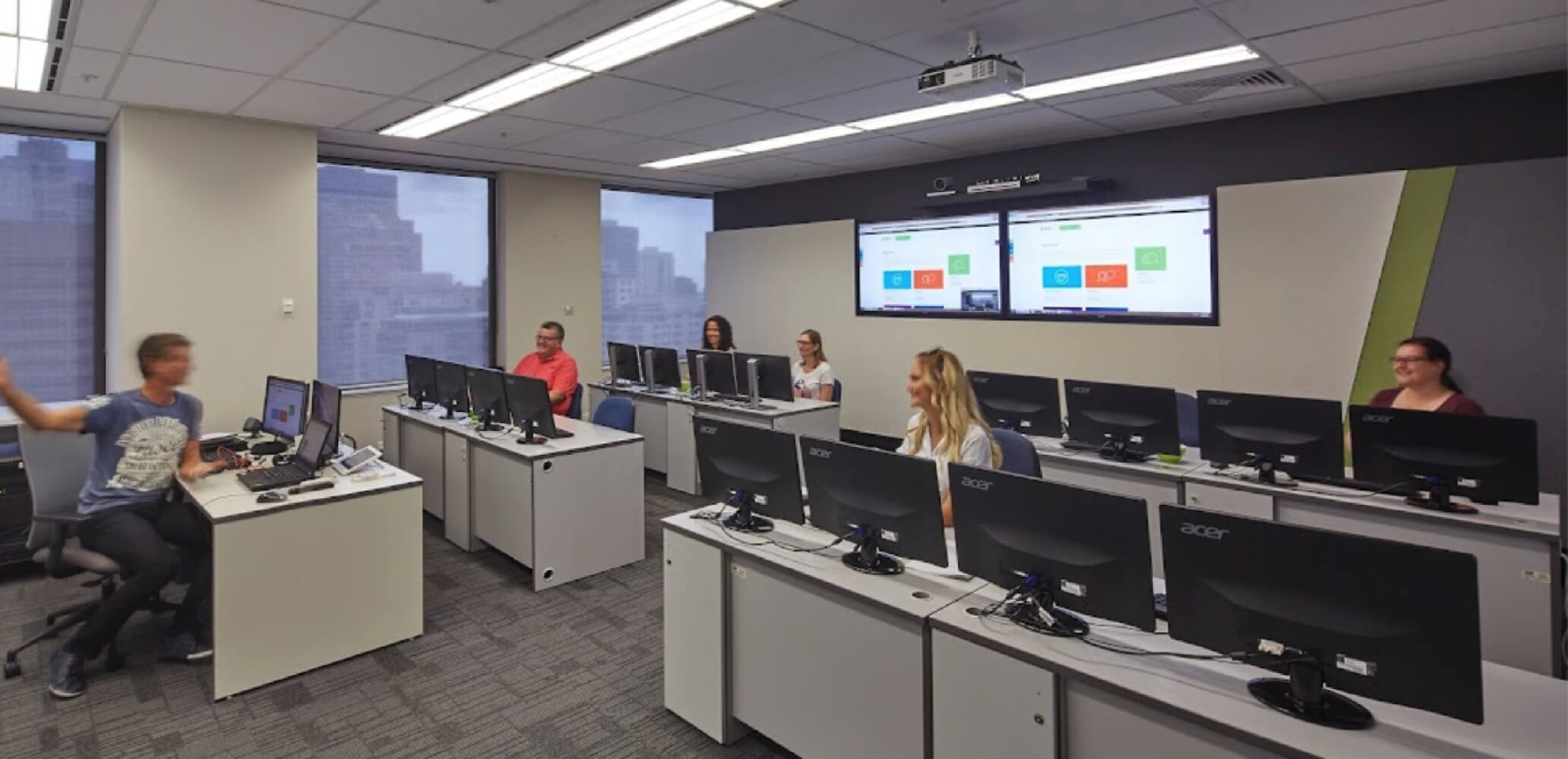Introduction
In today's interconnected world, where technology plays a vital role in our personal and professional lives, ensuring robust cybersecurity measures has become more critical than ever. Cyber threats continue to evolve, presenting new challenges and risks for individuals and organisations alike. In this blog post, we will explore the multifaceted world of cybersecurity, the various types of threats faced, and the need for a consolidated cybersecurity architecture to protect against them.
Australia, like many other nations, faces a growing number of cyber threats, underscoring the importance of implementing strong cybersecurity measures. According to the Australian Cyber Security Centre's (ACSC) Annual Cyber Threat Report, cybercriminals are becoming increasingly sophisticated, targeting both individuals and organisations across various sectors. In the 2020-2021 financial year alone, the ACSC responded to over 76,000 cybercrime reports, demonstrating the scale of the issue.
What is Cybersecurity?
Cybersecurity encompasses a range of practices and technologies designed to protect computer systems, networks, and data from unauthorised access, theft, and damage. It involves safeguarding against both external threats and internal vulnerabilities. Let's take a closer look at the different types of cybersecurity:
- Network Security: Network security focuses on securing computer networks, including the hardware, software, and protocols that enable communication and data transfer. It involves implementing firewalls, intrusion detection systems, and encryption mechanisms to prevent unauthorised access and data breaches.
- Cloud Security: As cloud computing gains popularity, cloud security has become a critical component of cybersecurity. It involves protecting data stored and processed in cloud environments, ensuring proper authentication, encryption, and access controls.
- Endpoint Security: Endpoints, such as computers, laptops, and mobile devices, are often the weakest link in the security chain. Endpoint security aims to secure these devices and prevent them from being exploited by cybercriminals through measures like antivirus software, patch management, and device encryption.
- Mobile Security: With the proliferation of smartphones and tablets, mobile security has emerged as a specialised branch of cybersecurity. It involves securing mobile devices, apps, and the data they access, often through measures like secure app development, mobile device management, and remote wipe capabilities.
- IoT Security: The Internet of Things (IoT) encompasses interconnected devices embedded with sensors, software, and network connectivity. IoT security focuses on protecting these devices and the data they collect, as they often present unique vulnerabilities that can be exploited by attackers.
- Application Security: Application security involves securing software applications against unauthorised access, tampering, or misuse. It encompasses secure coding practices, vulnerability assessments, and penetration testing to identify and patch security flaws.
- Zero Trust: Zero Trust is a security framework that assumes no trust in any user or device, even if they are within the organisation's network perimeter. It employs strict access controls, continuous monitoring, and multi-factor authentication to ensure that only authorised users and devices can access resources.
The Evolution of the Cybersecurity Threat Landscape
As technology continues to advance, cybercriminals are adapting their tactics, making it crucial for organisations to adopt proactive security measures to combat the evolving threat landscape. Alongside these advancements, there has been a significant increase in the average cost per cybercrime report across different business sizes. For small businesses, the average cost has risen to over $39,000, while medium businesses now face an average cost of $88,000. Large businesses, on the other hand, are confronted with a staggering average cost exceeding $62,000. This represents an average increase of 14 percent compared to previous years, highlighting the growing financial impact of cyber threats on organisations of all sizes. Here are some prevalent types of cyber threats:
- Gen V Attacks: Gen V attacks refer to highly sophisticated and advanced cyber threats that exploit multiple attack vectors simultaneously. These attacks often combine various techniques, such as social engineering, malware, and network infiltration, to compromise systems and steal sensitive information.
- Supply Chain Attacks: Supply chain attacks involve targeting a company's suppliers or vendors to gain unauthorised access to their systems. Attackers exploit vulnerabilities within the supply chain to compromise the final target, potentially affecting numerous organisations and their customers.
- Ransomware: Ransomware is a malicious software that encrypts a victim's data, rendering it inaccessible until a ransom is paid. Ransomware attacks have seen a significant increase in recent years, with cybercriminals targeting businesses and individuals alike.
- Phishing: Phishing attacks involve the use of fraudulent emails, messages, or websites to trick individuals into revealing sensitive information, such as passwords or credit card details. Phishing attacks have become increasingly sophisticated, making it harder to distinguish between legitimate and malicious communication.

- Malware: Malware encompasses a range of malicious software, including viruses, worms, Trojans, and spyware. It can be designed to steal data, disrupt computer systems, or provide unauthorised access to networks. Malware is often distributed through infected websites, email attachments, or compromised software.
The Need for a Consolidated Cybersecurity Architecture

With the ever-growing complexity of cyber threats, organisations need a consolidated cybersecurity architecture that can effectively protect their digital assets. Here are some factors driving the need for such an architecture:
- Sophisticated Attacks: Cybercriminals are continually refining their attack techniques, making it crucial for organisations to have comprehensive security measures in place. A consolidated cybersecurity architecture provides a holistic approach to detect, prevent, and respond to both known and emerging threats.
- Complex Environments: Modern organisations operate in complex IT environments, often comprising hybrid cloud systems, multiple endpoints, and interconnected networks. A consolidated architecture ensures consistent security policies and controls across the entire infrastructure, minimising vulnerabilities and potential gaps.
- Heterogeneous Endpoints: The rise of remote work and the use of various devices for business operations have increased the number of endpoints that need to be secured. A consolidated architecture enables organisations to manage and protect diverse endpoints effectively, regardless of their location or operating system.
- Rise of Remote Work: The COVID-19 pandemic has accelerated the adoption of remote work, bringing about new security challenges. A consolidated cybersecurity architecture facilitates secure remote access, enhances employee awareness, and safeguards against threats targeting remote workers.
Conclusion
In the face of evolving cyber threats, understanding the different types of cybersecurity and the need for a consolidated architecture is crucial for individuals and organisations. By implementing robust security measures and staying up to date with the evolving threat landscape, we can protect our digital assets and ensure a safer online environment for all.
At Nexacu, we are committed to empowering individuals and organisations with the knowledge and skills needed to navigate the complex world of cybersecurity. Our Certified in Cybersecurity one-day workshop is designed to help participants build an understanding of fundamental security best practices, policies and procedures and learn the foundational knowledge of key cybersecurity concepts, determined by expert professionals and practitioners in the field.
This is an excellent course for professionals looking to gain more cybersecurity knowledge as they start their cyber career or anyone that relies on a better understanding of cyber risk as part of their role. The (ISC)² Certified in Cybersecurity certification course covers off key cybersecurity concepts across 5 domains:
Domain 1: Security Principles Get to know the security concepts of information assurance, the risk management process, security controls, the (ISC)2 Code of Ethics and governance processes.
Domain 2: Business Continuity (BC), Disaster Recovery (DR) & Incident Response Concepts Show you grasp the three key concepts above. Domain 3: Access Controls Concepts Find out what you need to know about physical access and logical access controls.
Domain 4: Network Security Dig into computer networking, network threats and attacks and network security infrastructure.
Domain 5: Security Operations Learn all about data security, system hardening, best practice security policies and awareness training
Investing in cybersecurity training is not only a proactive step towards securing your digital assets but also a wise business decision. By upskilling your workforce, you can mitigate risks, enhance your organisation's resilience, and maintain the trust of your customers and stakeholders.
Don't wait for a cyber incident to happen - take charge of your cybersecurity journey today. Together, let's build a safer digital world.


























